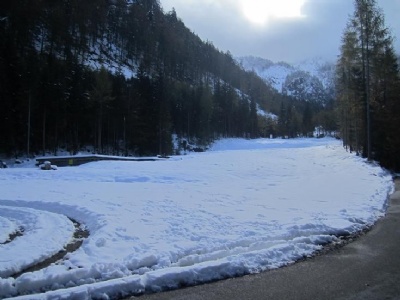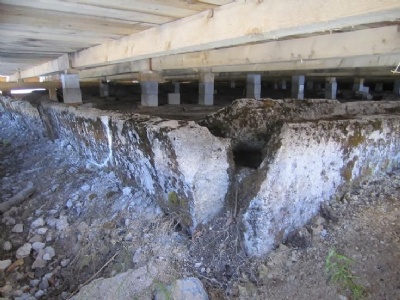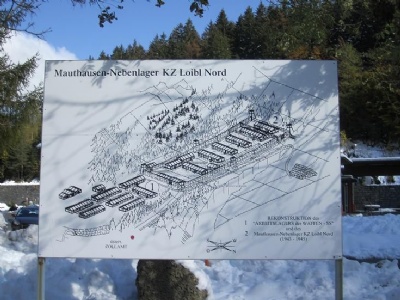Loibl North
In 1943, two satellite camps subordinated to Mauthausen were set up at Loibl Pass (Ljubelj) at the Austrian-Slovenian border. One camp was located on the south side and was called Loibl south and was established in June. The second camp was located on the north side and was called Loibl north, established a few months later. Both camps lay at about 1000 meters altitude and both prisoners and guards considered it a form of punishment bieng sent there. The purpose of the camps was to use the prisoners as slave workers for a tunnel construction through the mountain (Loibl pass) on each side of the camps. Previously, the transports had crossed the mountain, but through the tunnel construction, the transports would be more efficient. The first prisoners to arrive at the southern camp in June was 330 french political prisoners from Mauthausen. Lack of food, lack of medicine, heavy work, harsh climate, maltreatment, spread of infectious diseases made life in the camp difficult.
In December 1943 prisoner’s had dug through the entire mountain (1500 meters). Exactly how many died from work or other causes cannot be determined. The prisoners no longer able to work were sent back to Mauthausen and probably killed for being unproductive. About 40 prisoners were murdered in the camps and the SS set up two primitive outdoor crematorias, one at each camp, to cremate dead prisoners. The area around the Loibl pass was also full of partisans and about 30 prisoners managed to escape and join the partisans. The northern camp was gradually dismantled in mid-April 1945 due to increased partisan activity. Remaining prisoners were sent to the southern camp. Another 200 prisoners were sent back to Mauthausen. In connection with the German army’s retreat from Slovenia via the Loibl pass in May, 1945, the southern camp also began to evacuate using the tunnel. These prisoners were later liberated by the Partisans.
Current status: Demolished with information boards (2011).
Location: 46°26'37.76"N 14°15'05.79"E
Get there: Car.
Follow up in books: Kogon, Eugen: The Theory and Practice of Hell: The German Concentration Camps and the System Behind Them (2006).



The Nazis were unable to destroy the camps and were therefore intact when they were liberated. But already in June 1945 the camps began to be dismantled because the material was needed elsewhere in the post-war ravaged Europe. The passage through the mountain remained closed until 1950 and the preservation of the two camps took different forms. On the Slovenian (jugoslavic) side, a memorial park was established in 1954, while the camp on the Austrian side fell into disrepair due to disputes over who owned the land. It took until 1995, on the fiftieth anniversary of the liberation, that, under pressure from survivors, a memorial plaque was erected at the site. These plaques were not located at the camp site but instead set up at the tunnel entrance. In 2004, the former camp area was listed as cultural-historical land and only in 2008 the issue about the land was solved. In 2009, the former camp area was finally cleared and there are several physical remains planned to become part of a future memorial park, similar to the one found in the south sidan. Until then, visitors are refereed to information boards located just outside the camp area.